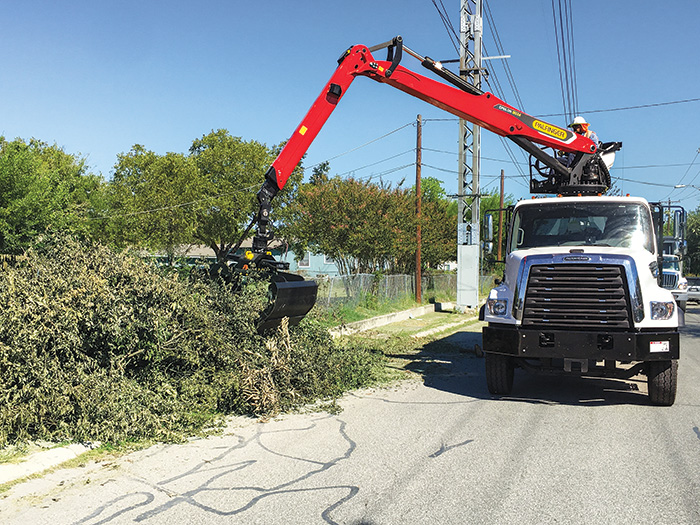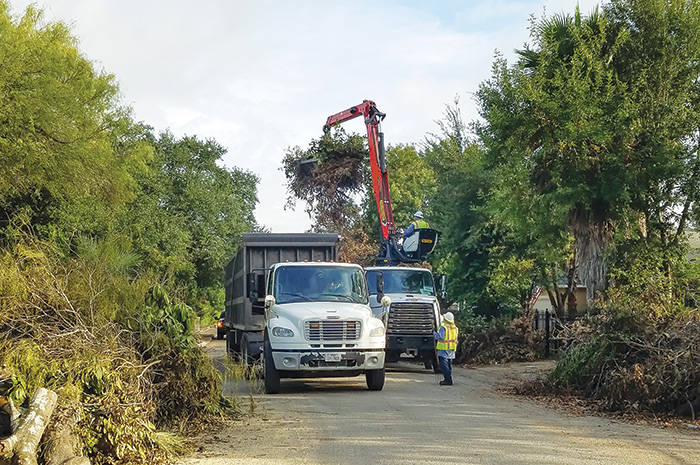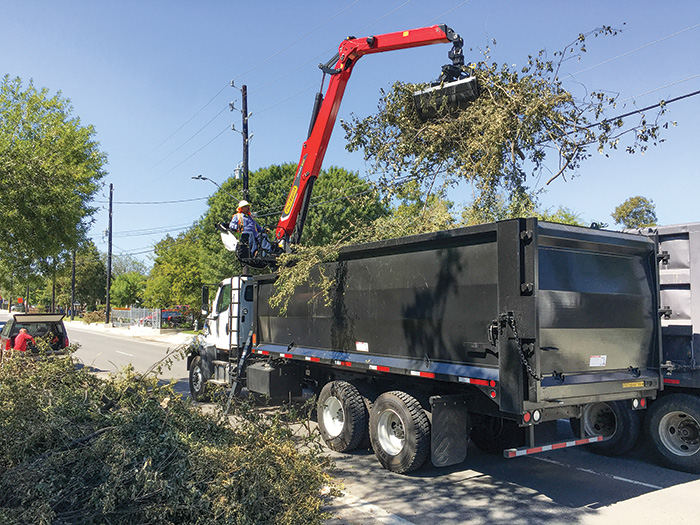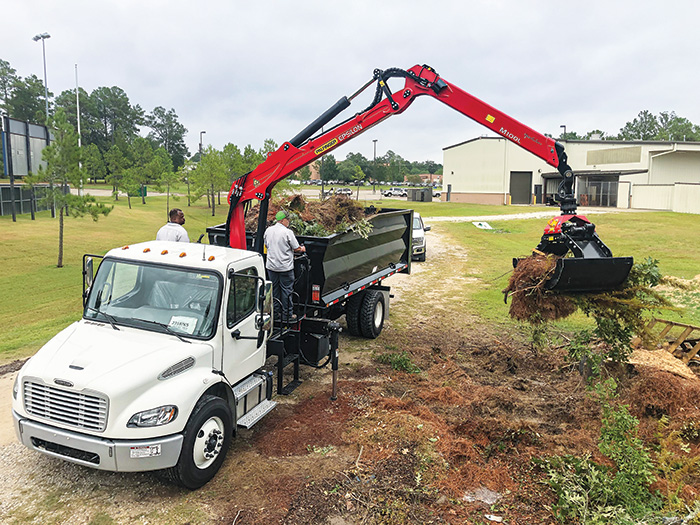While you may have many options when it comes to selecting a grapple loader, here are six tips that can help you find the best fit for your unique needs.
By Tom Zwickle
So, you are interested in a grapple loader. You will want to consider a few things when determining what will fit your needs. A grapple loader is used across various industries and has been quite popular in refuse and waste management. Not only does its efficiency and strength make it an essential tool for recycling centers, waste management facilities, and various other locations, but it also allows you to grab and lift a substantial amount in one single operation. The use of a grapple loader, therefore, enables you to reduce your time and effort per job and maximize potential profitability.
Selecting the best grapple loader for your unique needs can translate into long-term cost savings. A reliable and durable grapple loader can help optimize waste removal tasks using fewer resources, including labor and equipment. There are a few essential features that you will want to consider when you are making your selection. Let’s delve into them.

#1: Grapple Truck and Chassis
First, you will want to start on your grapple truck and chassis. Choosing a grapple truck involves carefully considering several factors, such as the intended use and application. Each application has specific requirements for the loader/grapple combination and the chassis. Within the refuse industry, you will find grapple trucks operating in the following areas:
• Bulk waste management
• Storm clean-up operation
• Canal maintenance
• Tree service
A trend that is gaining traction within the bulk waste industry is the adoption of non-CDL packages. The non-CDL options are quickly becoming a favorite and giving companies alternate options as the market for CDL operators has become quite competitive. An example is a non-CDL package that can reach up to 27.5 feet with a lift capacity of 1,500 lbs. Powerful yet small and nimble packages are equipped with an 18′ body and 4,000 lbs. of payload.

#2: Design Considerations
Once you have selected the right chassis and body combination, you will need to think about the specific application. Ask yourself a few questions:
• How much reach and lifting capacity is required?
• How do you want to operate the loader?
• What type of grapple attachment is best suited for the job?
One often overlooked factor is the load movements (operating cycles) frequency within a given time frame. Do you plan on performing daily, weekly, etc.? For example, some grapple loaders are designed to perform 630,000 load cycles across a five-to-six-year period at a speed of two load cycles per minute. Understanding the specifications of your loader is essential.
#3: Reach and Lifting Capacity
The reach and lifting capacity of a grapple loader is also crucial. How far will your loader need to reach? How much will you need to lift when the loader is at full reach? These questions should be considered when determining which product may fit your needs the best. Additionally, you will also want to keep in mind the weight of the grapple, which can be as heavy as 1,000 lbs.
Note that a non-CDL chassis and 33K GVWR chassis will limit the reach and lifting capacity one can use. Upgrading to a tandem chassis allows access to the full range, which could be more than 40’ reach and lifting capacities in excess of 15,000 lbs.

#4: Operational Options
There are various methods to operate a loader, and while autonomous operation is on the horizon, for now, you can choose from the following options:
• Top Seat Model: This is the most common method where the operator sits on a seat at the top of the loader with a full view of the body and loading area.
• Dual Stand-up Controls: The operator leaves the truck cabin for a platform mounted behind the cab and has a choice of two operating stations located on each side of the truck. This unique setup allows the operator to stand in front of the body, giving them a full view of the loading area and the interior of the body. This feature is popular in the bulk waste model due to the high movement rate of the truck from stop to stop.
• Fully Enclosed Cabin: Although not frequently used due to the short time in-between truck movements, this method is an appealing option for some due to comfort, especially during harsh winter conditions.
• Remote Controls: This method allows the operator to run the loader from the ground to survey the area and load prior to loading. It can also operate from a top-seat, which has the advantage of top-seat controls and the flexibility of ground control.
#5: Importance of Grapple Attachments
The final and crucial piece to your grapple truck is the grapple itself—the tip of the spear that is responsible for ensuring a smooth and productive load. Not all grapples are the same, and a wide variety of grapples are designed for each unique application. If you are specifically looking for a grapple for use in the refuse industry, look for a grapple with high volume and replaceable edges. It is also important to look for a design that protects the hoses and cylinder from debris, as grapple hoses are one of the most frequent repair areas.

#6: Quality Construction and Design
Grapple trucks typically operate in harsh environments. A well-designed grapple loader ensures durability and can withstand extreme conditions. A quality build designed for durability extends its lifespan and reduces the need for frequent repairs or replacements. By choosing a well-built loader that protects key components, you can minimize downtime and increase profitability.
Therefore, it is important to your operation to choose a manufacturer who understands your business and designs a product to meet your application. One who recognizes this need, and offers loaders that are built for the toughest of job site conditions. Every hose, pipe, cylinder, and fitting should be protected from the elements. Time is money and, in some cases, where units are operating in disaster zones, parts are not readily available.
Streamlining the Process
Grapple loaders in bulk waste management are vital in streamlining waste-handling processes, increasing productivity, and reducing manual labor. They help minimize the risk of injuries and improve operational efficiency in waste management operations. Any operation needs to have a grapple truck designed with its application in mind to help ensure that the waste removal process is carried out smoothly and optimally, benefiting both the workers and the overall project. | WA
Tom Zwickle is a seasoned professional with 27 years of industry experience in the crane/loader sector. He has been with PALFINGER North America since 2007 and is currently the Outbound Product Manager for the EPSILON Timber and Recycling Loader. Adding to his professional credibility, Tom is also a military veteran who served in the U.S. Army for five years.
PALFINGER is an international technology and mechanical engineering company and a leading producer and provider of innovative crane and lifting solutions. Since 1989, PALFINGER serves its customers in North America with a comprehensive product portfolio perfectly measured to the region’s needs and standards. With a broad sales and service network, a mobile service fleet of more than 100 vehicles, four manufacturing and assembly sites, and 15 locations that offer custom-built solutions, PALFINGER guarantees its customers the best support close at hand in the region. With its new headquarters in Schaumburg, IL, PALFINGER is underlining its aim of becoming North America’s leading supplier in all product lines by 2027. For more information, visit www.palfinger.com/en-us/products/forestry-and-scrap-cranes
